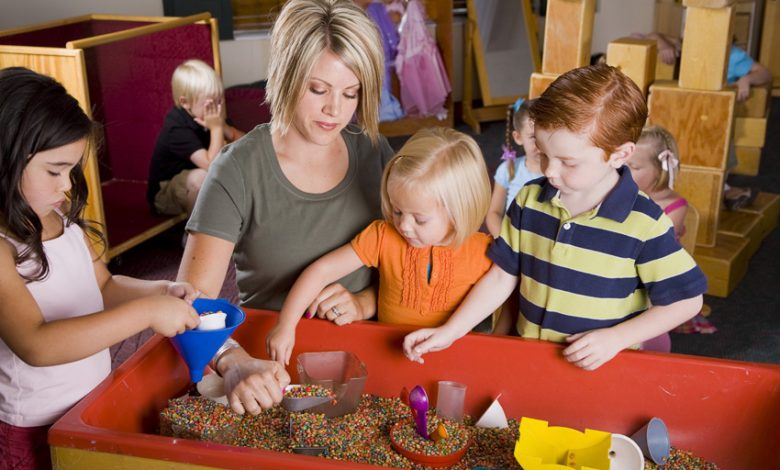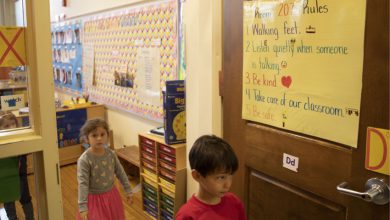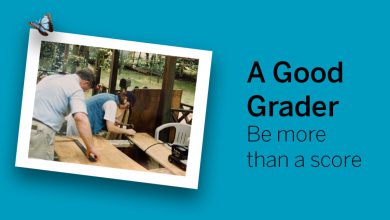The Whole Child Bridge: Linking Tenets to Developmental Domains

This week I’m excited to share a post that I co-authored with Matthew Mingle Ed.D., Superintendent of Schools in Warren Township, New Jersey. Matt is also the Vice President of the ASCD Governing Board, and together we serve on the NJASCD Affiliate Board.
Although many families, educators, and organizations talk about educating the whole child, we do not all talk about the whole child in the same way.
For instance, the early learning field talks about five essential domains of development, while the Association for Supervision and Curriculum Development (ASCD) describes the five tenets central to the Whole Child approach.
While these separate notions of the whole-child approach are not incompatible, it is worth exploring the differences and commonalities for the purpose of connecting whole-child approaches and ensuring we are all talking about the same thing for the benefit of the children and families we serve.
A foundational element of the early learning field is that the current science of child development ought to guide the interactions of adults and children, as acknowledged by the very definition of developmentally appropriate practice.
The difficulty here is that there is a lot going on in the early learning field (and in the educational field in general). Systemic fragmentation in early learning makes it difficult for children and families to access the high-quality care they need, and it also makes it difficult to align instructional practices for curricular and assessment cohesion.
In the early learning field, when we think about educating the whole child, we think about domains of development, all of the areas that are important to the development of children from birth through age eight (i.e., language and literacy development, math and science understandings, physical well-being, social and emotional development, and approaches to learning). While many of these areas are familiar to educators throughout the education field, approaches to learning may seem like a unique concept to those outside of early learning.
Although the terminology might be different to non-early learning educators, the concepts that make up approaches to learning (e.g. engagement, planning and problem solving, persistence, initiative, and creativity) should sound familiar, as these are essential skills in our field and receive frequent acknowledgment by school districts throughout this country.
Of course, early learning does not have a monopoly on whole child considerations.
In 2007, the Commission on the Whole Child was convened because ASCD believed that the success of each learner could only be achieved through a whole-child approach to teaching and learning. This was during a period in the United States when a lot of emphasis was placed on high-stakes tests, so ASCD asked the commission to consider “What’s good for the child?” This whole-child approach to education says that each child, in each school and each community, deserves to be healthy, safe, engaged, supported, and challenged. These five tenets of ASCD’s Whole Child approach are based on Abraham Maslow’s hierarchy of needs: the basic premise of ASCD’s Whole Child approach to education is that students cannot learn unless they are healthy and safe. Subsequently, they will not learn unless they are engaged, supported, and challenged.
To build further on the tenets, consider the following statements.
- Each student enters school healthy and learns about and practices a healthy lifestyle.
- Each student learns in an environment that is physically and emotionally safe for students and adults.
- Each student is actively engaged in learning and is connected to the school and broader community.
- Each student has access to personalized learning and is supported by qualified, caring adults.
- Each student is challenged academically and prepared for success in college or further study and for employment and participation in a global environment.
As we attempt to build bridges and link different understandings of the whole child, it is essential that we keep the tenets in mind, which provide context for whole child considerations, while keeping the development of each and every child at the forefront as well.
As a brief example, consider a curriculum and assessment approach that gets at the “challenged” tenet.
Imagine an administrator without an early learning background (the norm rather than the exception), who thinks that, if we just challenged the children in kindergarten, they would surely do better. This administrator might mistakenly think that, if we had an Advanced Placement (AP) kindergarten program, our children would be challenged and perform better. Thankfully, to our knowledge, there is no such thing as AP kindergarten, but the point remains that “harder” does not equal “better.” The whole-child tenets provide a useful lens through which administrators and policymakers can critically examine existing programs and those proposed for implementation.
So, where should a well-meaning educator who wants to bridge the worlds of early learning and the larger K-12 context begin?
Start with an understanding of exactly what the whole-child approach is, including the domains of development and tenets that enable each and every child to be healthy, safe, engaged, supported, and challenged. It takes time to build this common vocabulary and understanding, but then you will be in a better position to pay attention to the whole child, as well as to whole families and whole communities.





